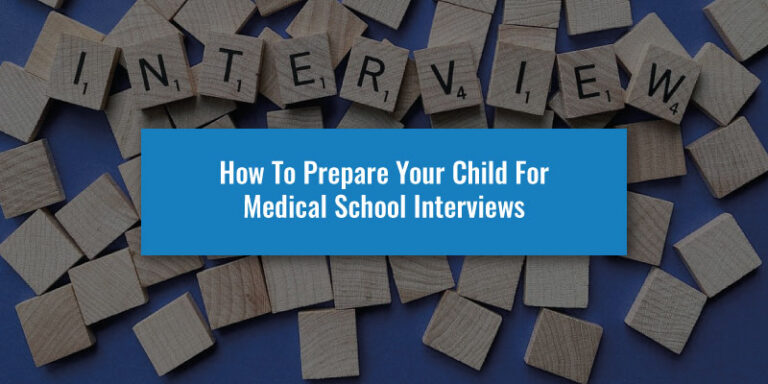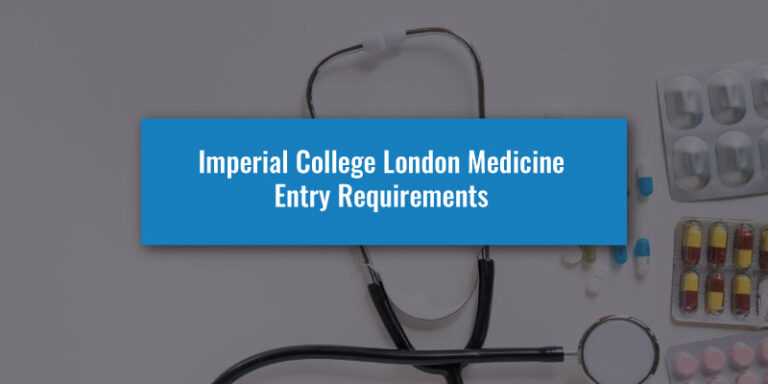When applying for Medical Schools, it is important to have an understanding of the different teaching methods used.
One method used is Problem Based Learning (PBL) which when carefully constructed, open-ended problems are used by groups of students to work through content to a solution.
What actually is PBL though, and which UK Medical Schools use it as a teaching method?
What Is Problem Based Learning?
What is key about problem-based learning is that it is patient-centric, and means you will be exposed to patients early in your studies.
Pioneered by the University of Manchester and has since been adopted by a number of other Medical Schools, but the level of focus will vary with each university.
Students are given medical cases to resolve and learn from, guided by group work with a tutor and self-directed learning.
Group work, on top of academic and clinical learning, helps to develop communication, teamwork and problem-solving skills, personal responsibility and respect for others.
The basic structure of a PBL session is:
- You are presented with a 'problem' or case study in small groups.
- Your group will brainstorm possible hypotheses and solutions and decide what you need to learn to solve the problem. These are your learning objectives.
- You go away and gather all the information you need. This is usually in the form of private study and ready.
- Finally, you present the findings to your group to compare notes.
Medicine is incredibly competitive and it helps to have an edge. Our expert tutors are on hand to help you achieve your dream offer.
We help you craft the perfect Personal Statement, achieve a highly competitive UCAT score and teach you how to Interview effectively – covering all areas of your Medicine application.
Discover our Medicine Full-Blue Programme by clicking the button below to enrol and triple your chances of success.
Example of a PBL Scenario
Understanding the concept of a PBL is only one part of it, grasping what types of scenarios may come up clearly demonstrates what the expected outcome is.
The example below gives you an idea of the scenarios you are likely to be presented with:
“A 44-year-old male presents to his GP with epigastric pain and weight loss for the past 6 weeks. The patient has no other medical conditions but takes ibuprofen on a regular basis for back pain. He works full-time as a lawyer, which he finds stressful, and discusses not having much time to spend at home with his wife and young children. The patient smokes 20 cigarettes on a daily basis. On examination, the patient is very tender in the epigastric region, and the GP notices that his clothes appear loose. The GP refers the patient for an urgent upper GI endoscopy, as they are concerned about the patient’s weight loss. The upper GI endoscopy reveals that the patient has a gastric ulcer, and the biopsy is positive for H. Pylori. When he returns to his GP to discuss the results, he is prescribed lansoprazole, clarithromycin and amoxicillin and asked to return in 4 weeks to discuss how he is improving.”
Based on the scenario, here’s how a medical student might have approached this task.
Firstly, after reading the scenario the next thing to do is consider any words that you may not understand. In this scenario these might be:
- Epigastric: a specific region of the abdomen
- Endoscopy: a medical investigation where a long, thin, flexible tube with a camera on the end is passed through the mouth and down into the stomach
- H. Pylori: a type of bacteria that can infect the stomach (full name: helicobacter pylori) and cause gastric ulcers
- Lansoprazole: a medication classified as a ‘proton pump inhibitor’ that works to reduce the amount of acid produced by the stomach
- Clarithromycin: an antibiotic
- Amoxicillin: an antibiotic
Secondly, after defining any words you were unsure of it would be time to decide what you think are the main issues.
There are a number of issues that you could come up with based on this scenario. These include:
- Surface anatomy of the abdomen
- Acid production in the stomach
- Causes/risk factors for developing a gastric ulcer
- Signs and symptoms of a gastric ulcer
- H. Pylori testing and microbiology
- Diagnosing a gastric ulcer
- Treatment of a gastric ulcer
From this, you will need to come up with a number of questions that you and your group members are going to research and prepare answers to share in your feedback session.
Access "The Oxbridge Application Vault"
- 300+ page ebook for Oxbridge Applicants
- 25 page ebook for Personal Statement
- 2h+ online course to succeed in any exam
- Online Oxbridge Success Calculator
- 12 page ebook about UniAdmissions

Which Medical Schools Use PBL?
It is all well and good knowing what the PBL teaching method is, but what Medical Schools offer this teaching style?
PBL forms a significant part of the Medical curriculum at Barts. Groups of up to ten students discuss medical cases to reach a diagnosis and management plan, aided by a facilitator from the faculty. Other teaching methods used are lectures, practical sessions, communication skills, project work and e-learning.
The Universities of Hull and York came together in 2003 to create an integrated five-year medical programme at Hull York Medical School (HYMS) with PBL at its heart. With an innovative curriculum aimed at an ever-changing NHS, HYMS equips students with a strong foundation in clinical science through its integrated programme.
Keele’s Medical programme is highly integrated, with learning centred around continuous feedback. Teaching is delivered through lectures, PBL, seminars, and cadaveric dissection, set in a modern spiral curriculum, in which core themes are revisited in increasing clinical detail each year.
Lancaster has one of the smallest Medical programmes in the UK, with an intake of only 129 students each year. Its teaching style is an integration of PBL along with clinical anatomy teaching and lectures, with students offered clinical contact from the offset.
Teaching at St George’s is delivered through lectures, tutorials, seminars, PBL, and clinical placements, with anatomy taught through dissection and prosection. Case-based learning helps students integrate theory with real clinical scenarios.
At the University of East Anglia (UEA), you will use PBL techniques to apply your learning to virtual scenarios and real patients. This is a practical, hands-on way to hone your knowledge and approach to Medicine, allowing you to develop the relevant practical and communication skills in both simulated and real environments.
Edinburgh Medical School’s six-year programme aims to produce doctors equipped for general practice, hospital medicine, and academia careers. Edinburgh highlights its academic rigour as a key feature of its medical curriculum. Using the PBL approach helps integrate concepts and reinforces the study of the fundamentals of Medicine in context.
Exeter’s five-year Medical degree is delivered in partnership with the NHS in Devon and Cornwall to provide a unique learning experience in healthcare, emphasising the importance of multi-professional patient care in clinical practice.
At the University of Glasgow, PBL is undertaken in Phase 1 (term 1 of year 1) and Phase 2 (term 2 of year 1) and follows a spiral curriculum. The course is split into four phases with gradually integrated clinical exposure from the beginning of the course.
The pioneers of PBL, the University of Manchester is the largest Medical School in the UK. The course is taught through full-body dissection, alongside prosections, skeletal materials, and anatomical models. Teaching is delivered through PBL, lectures, practical classes, and early clinical placements.
Peninsula Medical School at the University of Plymouth uses PBL methods to nurture critical thinking and leadership. This is with the aim to serve you in not only becoming an effective doctor but also to support you in realising your ambitions.
The underlying philosophy of the curriculum at the University of Sheffield is that all learning and teaching should be thought of from the perspective of the patient. This patient-centred approach means students have patient contact from their first year.
What Are The Pros and Cons Of PBL?
As with any teaching method, there will likely be advantages and disadvantages to it. So what are the pros and cons of PBL?
| Pros | Cons |
|---|---|
| Promotion of deep learning - PBL replaces traditional lectures with facultative mentoring, assistive learning, discussions, and real-life experiences. This helps in promoting deep learning within the individuals. Thus, students’ knowledge also grows as more and more discussions are made. | Requires more time - PBL takes more time and takes away study time from other subject areas. As well it requires a lot of monitoring and recording of the performance of the students throughout the process. |
| Developing retention of knowledge in the long term - Students participating in PBL activities can improve their information retention and recalling ability at one and the same time. | Poor performance in theoretical tests - Devoting too much time in PBL activities can create issues when students appear for standardised tests. This is because they may not have the right breadth of knowledge to achieve high scores in such examination. |
| Introduction to open-ended questions - Most of the problems introduced in PBL curriculum are open-ended question. These give room for more and more discussions, data retrieval, and more and more understanding of the subject matter. | Integration of multiple disciplines - To make the PBL model a success, multiple disciples have to be integrated so students can understand the different aspects of a situation. Hence, systematic organisation and extensive research are required for proper PBL implementation. |
| Improved teamwork and interpersonal skills - Successful completion of PBL challenges hinges firmly on communication and interaction. Meaning, instead of memorising facts on their own, students get a chance to present them in front of a group, defending and revising them when required. This helps a lot in building transferable skills based on teamwork and collaboration. | Varying degrees of applicability and relevancy - It can be exceptionally difficult to identify a problem that can be tangible enough for students to solve in relevance to the content of their studies. This automatically introduces 2 issues. One, if it’s easy for students to get distracted from the challenges presented by the problem, they may miss out on pertinent information. Two, you can swerve off the focus and the purpose of the problem to make students run into abrupt obstacles. Overcoming them may has its benefits, but it can also compromise the initial planning which you did at the beginning of your lessons. |
| Opportunity to apply skills in the real world - Problem-based learning or PBL can help students develop skills that they can apply in real-world scenarios. The tangible context of the subject matter presented in PBL activities can make the entire learning experience more durable and profound in the long term. | Group dynamics issues - Unfortunately you are not going to be liked by everyone and this could cause issues when working under a PBL structure. |
PBL or Traditional Learning - Which is Better?
Medical schools operate largely in two camps: Problem-based learning (PBL) and traditional learning. The schools that focus on a traditional syllabus emphasise the scientific basis behind medicine as taught by lectures and seminars. Some medical schools also have an integrated course, where clinical content is mixed with the preclinical material over the first couple of years.
The question of choosing PBL versus traditional learning is a difficult one as there are advantages to both styles.
When deciding between PBL and traditional learning, the amount of content delivered through each approach is an important factor. Generally, it’s thought that traditional learning offers a more comprehensive way of learning content. The reasoning behind this is that lectures are packed full of information, which may be sparser in PBL tutorials that are driven by the students themselves.
Traditional learning may be more similar to the style of learning at A-Levels, where information is largely delivered to you. This makes the transition to university easier.
In PBL teaching, an individual student will teach a particular topic to the group meaning the content of information taught will be dependent on the motivation of the individual students. The quality of delivery will also vary as not everyone who enters medical school will be a confident public speaker, even to a smaller class.
Traditional courses tend to emphasise the foundations of biomedical knowledge required in medicine earlier on. Areas of medicine that are very information-dense such as anatomy may be harder to learn through PBL format. This may be helpful when it comes to applying this in the clinical context as students move into hospitals during the later years of their medical courses.
As for the advantages of PBL, it encourages students to develop their research skills. Given that the style of each tutorial involves a particular student gathering and preparing information to teach the rest of the group, it encourages a self-motivational approach. These skills are essential for the continual learning required as a doctor, and this method of teaching equips students with the ability to drive their own learning.
PBL involves a patient case being proposed to the group before the theory is researched in more detail. This means that more dry, academic parts of the course are directly linked to clinical issues, meaning they can feel more engaging.
Indeed, PBL was pioneered in an attempt to translate academic teaching into a form where students could more easily see the applications of this in medical work. Learning the scientific basis of medicine can seem more interesting when it comes to PBL versus traditional learning, because theory is directly linked to work in the hospital environment.
PBL fosters group work and collaboration which are essential skills to improve as doctors working in medial and multidisciplinary healthcare teams. Presenting information to a group might seem scary at first but gaining confidence in this through PBL is very important for future work as doctors where presentations regarding patients, research and peer-to-peer teaching are commonplace.
Final Words
The effectiveness of problem-based learning differs from individual to individual depending on how significant the pros and cons appear to you.
PBL allows you to quickly and easily assess an issue and solve it. Traditional approaches do not leave as much scope for adapting to the unknown.
The value in giving students a question and letting them take control of their learning is endless, but the extent of this value can depend on the difficulties you face. Ultimately, you know best how you learn.
We hope that you have enjoyed this guide and that it will help you decide where you want to study medicine. If you want to learn more about the medical school admissions process, we have plenty of free guides available covering the UCAT, Personal Statements, Interviews and more!
If you’re looking for even more comprehensive and tailored guidance, explore our Medicine Full-Blue Programme to learn how our application support can triple your chances of success.
Ready to start your Medicine journey? Our application support provides you with structured learning to give you the best chances of success.
With over 250 hours of guided study (including unlimited One-To-One Tuition, Mock Interviews, Intensive Courses and Comprehensive Materials), our expert Medicine Full-Blue Programme truly gives you an advantage that can make the difference between an offer and rejection.
Our Medicine Full-Blue Programmes triple our students’ chances of success, so learn more by clicking the button below.







